Chapter One: Rock Bottom – “I don’t see a way that Ryan Tannehill makes it back for Miami. I just don’t He looks totally punch-drunk. Fatefully, I think it’s over.
These were the words of highly regarded Dolphins insider and contributor, Simon Clancy, on October 9. The Miami players, losers of four of the season’s first five games, headed for the tunnel of Hard Rock Stadium. Among them, embattled quarterback, Ryan Tannehill.
The shower of boos was an improvement over the in-game chants for Matt Moore, the Dolphins backup quarterback, but the clarity of the message was never minced – the fifth year quarterback’s approval rating had reached its valley.
Despite the clamoring for a change at the position head coach, Adam Gase, never wavered. Taking the podium and denouncing any possibility that Moore would see the field by way of any occurrence other than an injury, Gase stood by his starting quarterback.
They may not have known it at the time, but that was the moment Adam Gase unequivocally earned the admiration of all Dolphins fans.
A winning mentality in the fourth quarter, the arsenal of pitches in his tool bag, the ability to go off script, creating first downs with his legs – Gase identified all of these skills in less than one year with Tannehill.
Rather than forcing his quarterback to fall on the sword, Gase sent a more drastic message. After surrendering 12 sacks in two games, three mid-round draft picks enduring utter stagnant development were cut.
And Ryan Tannehill’s vast potential was tapped.
Chapter Two: The Calm Before the Storm-
2016 wasn’t an anomaly for Tannehill. His entire professional career has been mired by ups and downs. Whether it was a play-by-play, game-by-game, or even a year-by-year proposition, he has existed as the most polarizing figure in franchise history.
Stretches of games with no turnovers, elite fastballs down the seam, touch passes to the boundary – these flourishes got even the harshest critics to buy in.
Consistency was difficult to come by as he would revert back to taking multiple sacks per game and making some head scratching decisions with the football.
Any trusted talent evaluator will tell you that, just as important as the prospect’s talent, is the situation he is thrust into.
In his rookie season, the familiarity with Mike Sherman was supposed to make for a smooth transition into the league. Instead, he was saddled with an antiquated offense that relied on outdated principals that didn’t adhear to the quarterback’s skill set.
But being asked to stay in the pocket at all costs wouldn’t be the worst professional coaching advice Tannehill would receive.
When the team moved onto Bill Lazor, Tannehill was stripped of his ability to make adjustments at the line of scrimmage.
You read that right. Like a poorly behaved juvenile, Tannehill had zero freedom to make decisions without approval. So when he identified a double A gap blitz with an empty set, he was forced to stand in there and throw to a slow developing route progression with unblocked rushers in his face.
When that didn’t work, Joe Philbin publicly claimed that he urged the team to draft Derek Carr in the 2014 draft insisting he couldn’t win with the quarterback that was hand-picked by the Philbin regime in his first year as head coach.
And that’s how you tarnish a perfectly built quarterback prospect with the athleticism to play wide receiver whilst he waits his turn to play quarterback. A player with a big arm that is as dangerous on the move as he is from inside the pocket.
Forego his skillset and force him to do things that have worked for differnet quarterbacks on different teams in the past – a foolproof plan in the eyes of the ignorant.
That ignorance might be why all the former Dolphins coaches responsible for ruining a shining prospect are either out of football or have been demoted way down the football latter.
Joe Philbin is an offensive line coach in Indianapolis. Bill Lazor is the quarterbacks coach for the Cincinnati Bengals where he established his prowess by haulting all progress Andy Dalton had built under Hue Jackson. Mike Sherman is coaching high school and his son in-law, whom was brought in through nepotism, is the offensive coordinator for the Cincinnati Bearcats. Zac Taylor was the least qualified person in the quarterback room each year that he coached Tannehill.
Ryan Tannehill had a big contract, hadn’t lived up to expectations and owner Stephen Ross needed to make a decision that would either end Ryan Tannehill’s tenure in Miami or extend it for years.
So he hired Adam Gase.
Chapter Three: The Rise-
At Coach Gase’s media availability in Indianapolis for last weekend’s scouting combine, he made a statement that resonated with me as an amateur football evaluator.
Early in the season, Jordan Cameron wasn’t impacting games in the way Gase anticipated. Rather than moving on, he plugged in Cameron’s 2013 tape (his long pro-bowl NFL season) and tried to uncover the what made him successful.
So it should come as no surprised that he watched every throw Ryan Tannehill made in his NFL career before beginning work with him.
What he uncovered was a vast and diverse tool bag with multiple attributes capable of exploiting NFL defenses.
Gase afforded Tannehill the opportunity to be in charge of his protection calls. He gave him run pass options at the line of scrimmage. He allowed the quarterback to develop into a leadership position that could be an extension of the head coach.
Even more important than that, he played to the strengths of the fifth year quarterback. What are those skills? I’m glad you asked:
The Arm Talent: Often mistaken for the ability to chuck a football deep down the field, arm talent is something completely different. Is accuracy comprised when he’s on the move? Or when he’s forced to throw from an awkward angle? Can he rip the ball in between two zone defenders? Can he float a touch pass over the underneath linebacker and under the over the top safety?
Tannehill has every pitch in his arsenal. Coming out of a five or seven step drop and driving the football to the boundary with the requisite zip to beat the off corner to the receiver.
The touch to float the ball over a tightly contested wheel route.
This one might be the most difficult to describe. It’s a throw that somehow has touch AND zip. To make this throw, the quarterback needs the hand strength to generate torque and spin on the football to get it up the field, but also give it a quick descent into the the window. The GIF will do the describing for me.
There’s Aaron Rodgers and Ryan Tannehill when it comes to throwing the ball on the move – that’s it. Tannehill is exceptional in this regard. Gase recognized this and adapted his offense from a hurry-up spread it out scheme to more “nasty” splits (tight ends and receivers flexed closer to the offensive tackles) throwing from play action and getting the quarterback on the roll. Tannehill’s ball placement on these throws is exquisite and unmatched by all (sans Rodgers.)
Remember when the deep ball was a concern for Tannehill? It never should have been. It’s a highly volatile stat due to sample size. Aside from that, the only receiver that Tannehill ever struggled to connect deep with was Mike Wallace – who is known for having a miniscule catch radius. Charles Clay, Brian Hartline, Devante Parker, Kenny Stills, none of these guys would have any complaints about Tannehill’s deep ball. He throws it with and arching trajectory that allows the receiver to run under it.
Recognition of the rush: This was an area Tannehill really struggled in early in his career. The strides he made in this department are as much a credit to him as it is a testament to Gase for working with him. He adopted Peyton Manning’s choppy feet in the pocket while staying active and keeping his eyes down the field.
He has always been capable of starring down the gun barrel and delivering shots under immense pressure. He did it this past year in San Diego in what was the throw of the NFL season.
Pre-snap recognition: The best defensive coordinators mix their coverage and blitz looks so that the quarterback makes an incorrect read pre-snap and immediately has to play off script. Beyond just seeing the play pre-snap, the quarterback needs to apply it post-snap. Here, the 49ers will press the line of scrimmage and play a cover 2 shell that protects the first down markers. This frees up the long ball. Tannehill holds the safety with his eyes and commits him to the underneath route freeing up a 1-on-1 chance for Devante Parker – who he hits perfectly (and what a catch to boot.)
Understanding your matchup and getting the player into a winning route is a big part of the quarterback’s job. When they needed it most, he made the correct call and put Devante Parker in position to beat the Rams with a speed out – which he did. He notices inside technique from Los Angeles corner, Trumaine Johnson, and dials up the speed out with a fastball that not even Mike Trout could handle.
Reading plays pre-snap involves anticipation. Most offensive concepts feature a player clearing out an area for another receiver to free up. Here, Tannehill anticipates the space vacated by the X receiver to free up slot receiver Jarvis Landry. He calmly lets the play develop and floats a perfectly located ball that allows Landry to not only make a big first down, but take it to the house.
Late game prowess: Adam Gase intimated how great of a performer Tannehill was late in games. He led go ahead or game tying drives late in the fourth quarter against Seattle, Cleveland (OT), San Diego and Los Angeles.
Leadership: Against the Cardinals, Tannehill was carving up another defense during his stretch of play with a passer rating well over 100 with seven wins in eight games. When Calais Campbell was pushed into his knee, the energy was sucked out and vacuum sealed out of Hard Rock Stadium. Tannehill returned to the sideline and was greeted by his teammates showing their affinity for their teammate and quarterback.
Leadership has a variety of forms. The above GIF shows Branden Albert and Jarvis Landry’s displeasure with losing their starting QB. Below shows Tannehill overcoming 60% of his offensive line missing the game with an injury and still making plays.
The run reel/going off script: In the NFL, just about every quarterback can play within the confines of their particular offense. It’s the quarterbacks that can make plays when things break down that are truly special. Tannehill has this attribute in spades and he flashed the ability frequently in 2016.
There were times that he broke the pocket a little too early in search of making a play, but it resulted in fewer sacks and more big plays.
The added element to beat teams with his legs is a very real threat. He can beat defensive ends to the edge, get up the field and will lower his shoulder against unsuspecting defensive backs. Pundits like to poke fun at the fact that he played receiver in college. That’s okay with me. That type of athleticism leads to plays like these.
Chapter Four: The Future-
2016 merely scratched the surface on this player’s ceiling. The knee injury was unfortunate from the sense that the game was slowing down for the veteran at a rampant pace. It allows the dense national media to regurgitate the idea that he has, “never led his team to the post-season,” despite the fact that he was 8-5 and handed the keys to Matt Moore against two bad football teams in the New York Jets and Buffalo Bills.
With the knee injury already cleared for all football activities, he can continue to build on the improvements he made in 2016.
Movement within the pocket, pre-snap rush recognition, quicker decisions opposed to taking sacks, these were attributes used to knock the quarterback in the past.
Although the numbers don’t do his performance in 2016 justice, these areas of growth should make any Dolphins fan excited.
Too often a quarterback is judged on some accrued finite number. What is his passer rating or QBR? While stats certainly have a place in any evaluation, it’s extremely lazy to be so obtuse. To truly grade a quarterback, or any player for that matter, you need to identify all surrounding factors.
Was everyone where they were supposed to be? How did the protection hold up? For instance, in this big play to Devante Parker, Tannehill had Jarvis Landry wide open on the deep post. He had to come off the read due to the pressure. So while Landry is uncovered, Tannehill has to make haste with the next part of his progression. He gets himself into position to throw and heaves a pass, against his body, into a perfect location for Parker to make the play.
Most of Tannehill’s games, the number of plays where he makes a poor decision, throws a bad ball or does anything to hamper his team’s success can be counted on one hand – usually one or two.
That’s not to say he doesn’t have games where hiccups occur. The game against Baltimore and Cincinnati were not good games by his standards.
We’ve been here before with this guy. Just when the fans get excited about his career trajectory, something goes awry.
For the first time in his career he has continuity. With Jarvis Landry, Kenny Stills, Devante Parker, Jay Ajayi and two quality offensive tackles returning, he’s familiar with the personnel.
The offensive staff has made no changes and can build upon his success from 2016. For the first time in his career he has a sturdy foundation.
This is the quarterback Dolphins fans have been waiting for since 1999.

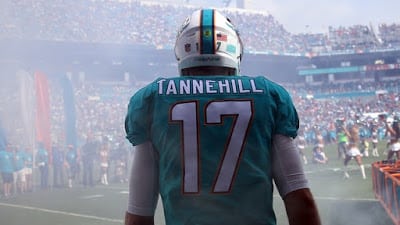




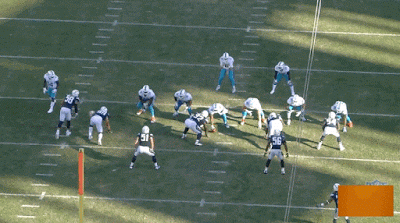















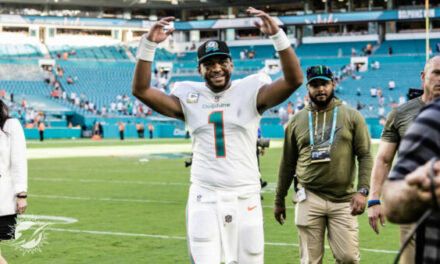
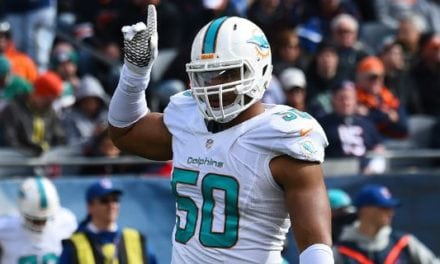







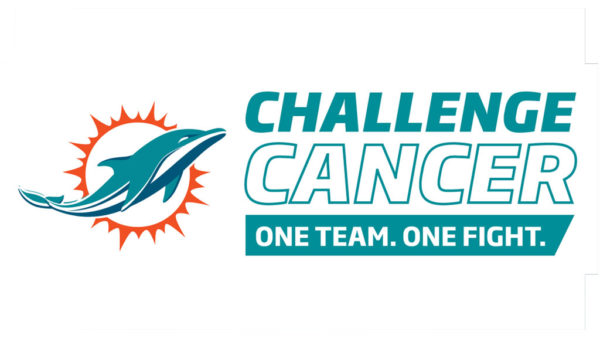



Great article. This is why DolphinsTalk.com is the best Miami Dolphins website on the Internet today.
This is a good article and accurate
Nice in depth article. This site has some amazing Dolphins content. Good work boys!